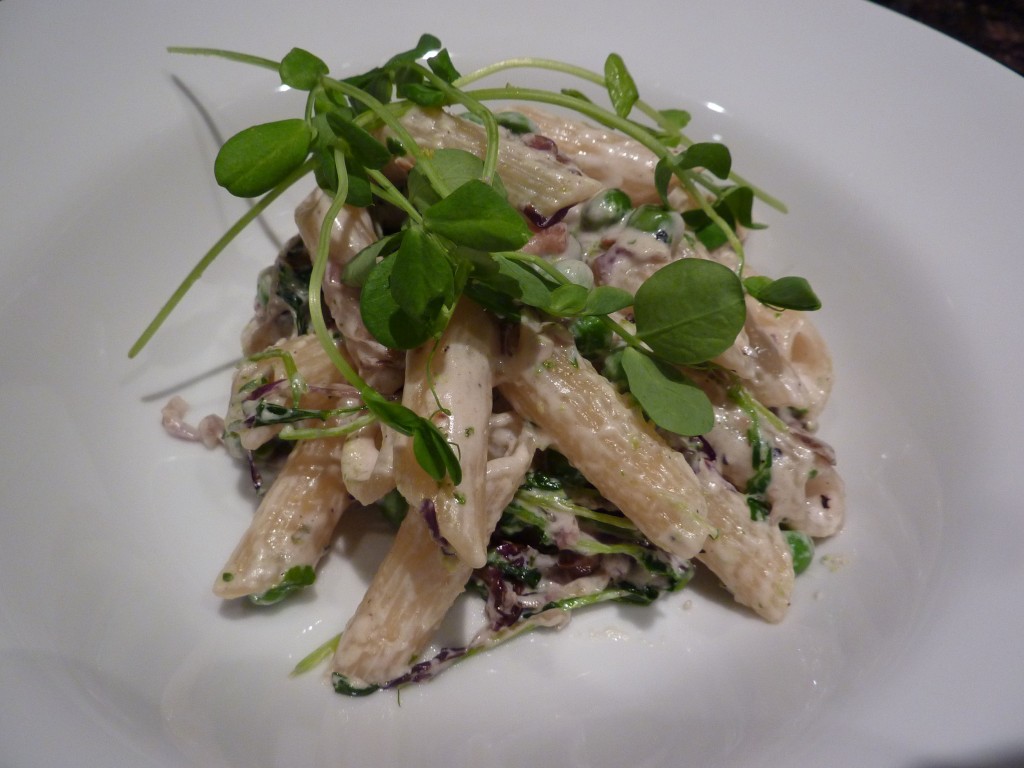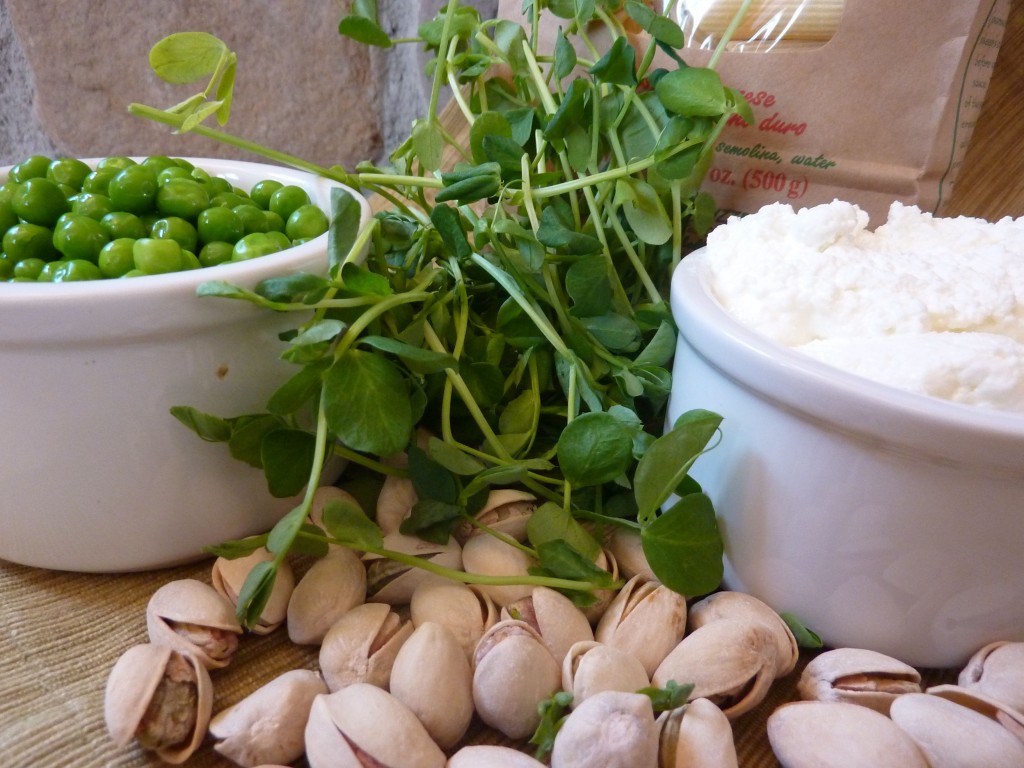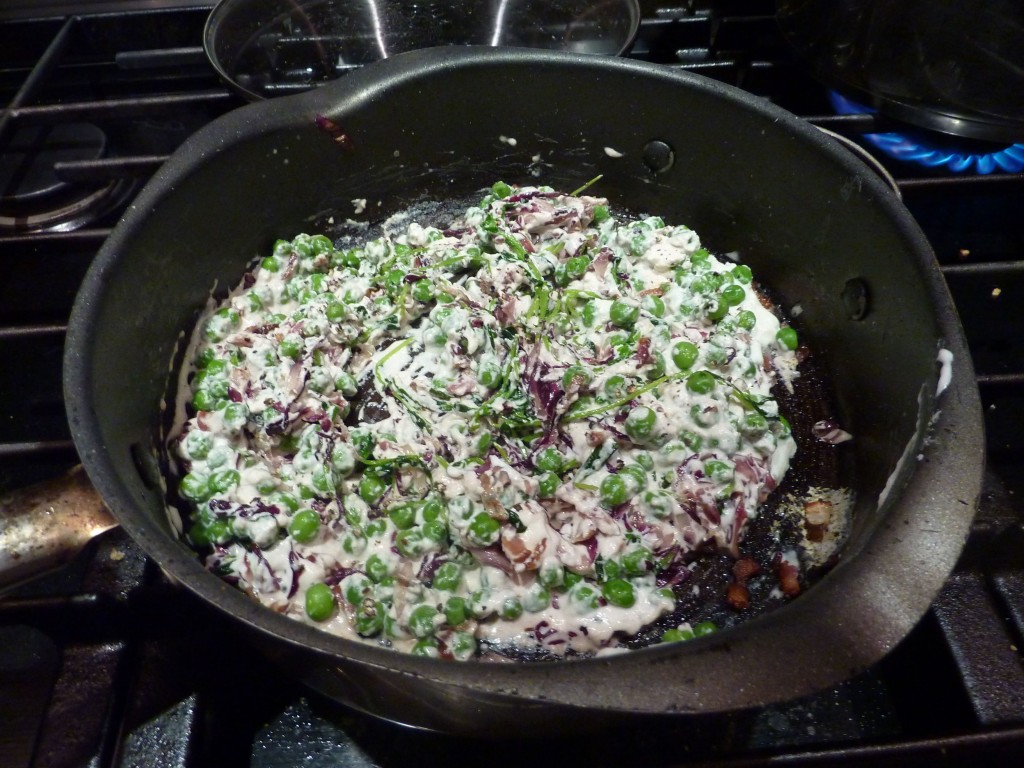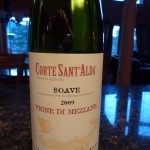
The Colli Berici (Berici Hills) are located in the Veneto region of Italy, south of Vicenza. Here, in the spring, one finds a local variety of peas that have been highly prized by the residents for centuries. Introduce by the Benedictine monks around the year 1000, the Lumignano peas are cultivated in Lumingnano, Castegnero, Nanto, Mossano and San Germano dei Berici.
The monks reclaimed the land at the foot of the Colli Berici (a wonderful hiking and biking destination, by the way), making this area ideal for the cultivation of peas, with the perfect habitat for exceptionally early production – lots of sun exposure, and heat held by the rock formations. Using this prime habitat, however, requires a lot of hard work on the part of the farmers, as they are grown in small terrace gardens cut into the steepest positions on the cliffs, in order to make best use of the sun exposure. Everything needed to build the terrace and cultivate the peas had to be carried up by the farmers. The result, however, is an extremely delicate and tasty product.

The peas of Lumignano have been prized for centuries. The Doges of Venice demanded that the peas of Lumingnano be the primary ingredient of their risi e bisi (rice and peas) that was traditionally served to the Doges for the Feast of Saint Mark, the patron saint of Venice. This feast day, April 25, coincidentally occurs just about the time the peas first arrive in the markets of Venice.
Today, cultivation of these Lumingnano peas is extremely limited, and are produced only by families for the needs of local restaurants and the Peas Festival, which is held every year in May.
The following recipe calls for bacon, which is not commonly used in Italy. Pancetta, which is unsmoked, and a bit spicier, is preferred in most regions of italy. I have seen several versions of a simple vegetable dish, peas cooked with pancetta. However, in the northeast regions we visit, bacon is found occasionally. Here, I have made a nice spring pea pasta. It is quite good without the bacon for a nice vegetarian meal.

Every summer, when I can get plenty of fresh herbs, I make lots of herb pestos. I use herbs such as mint, basil, chives, even garlic scapes (the curly green tops of the garlic plant). I first quickly blanch the herbs in boiling water – this preserves their lovely green color, otherwise the pesto can turn a unattractive grayish green. I then put the blanched herbs in a blender, add olive oil, and pureed. I skip the cheese and the nuts; I can always add them later if I choose to use them. I freeze the pesto in ice cube trays, then wrap each individual pesto cube. I can pull one or two out whenever I need to add a little something to a soup, as a nice accompaniment to fish or chicken, or here, in a pasta dish. If you have access to nice fresh mint, don’t bother with the pesto!
Penne with Peas, Bacon, Ricotta, Radicchio and Mint
Serves 4 to 6
5 ounces frozen peas, thawed or 1 pound fresh peas, unshelled
2 pieces bacon, cut into strips
1/2 cup thinly sliced radicchio
1/2 cup pea tendrils
1/2 cup ricotta
1 pound penne
1 tablespoon mint pesto, or mint leaves, thinly sliced
2 tablespoons pistachios, chopped
If working with fresh peas, shell them. Set a large pot of water over high heat and bring to a boil. Salt the water. Cook the peas in the boiling water until just tender. Scoop them out with a slotted spoon or spider. Keep the water hot for the penne. If using frozen peas, skip this step.
Heat a large saute pan over medium high heat, and add the bacon. Saute until lightly browned, but not crisp. Pour off all but 2 tablespoons of the bacon fat.
Add the radicchio to the saute pan, and cook until wilted. Add the peas and ricotta, and stir until combined and the ricotta is heated through. Turn off the heat.
Bring the large pot of water to a full boil, and add the penne. Cook until al dente, reserve 1 cup of pasta cooking water, then drain. Add the penne to the pea and ricotta mixture. If the sauce is too thick (this will depend on the water content of the ricotta), as a bit of ther reserved pasta water to loosen it. Stir to combine.
Stir in the mint pesto or mint leaves and pistachios. Serve, garnished with pea tendrils.
A great wine accompaniment:

Soave Corte Sant’Alda 2009 Vigne di Mezzane
Marinella Camerani at Corte Sant’Alda has dedicated much time and energy to the study of the micro-zones in her holding at Corte Sant’Alda. Each micro-zone has its own unique characteristics – sun exposure, soil type, temperature and rainfall variations. Determining which grapes will thrive in which micro-zone is an enormous undertaking, but the wines that result from this attention to detail are superb. All vineyards are managed using bio-dynamic agriculture methods.
Gargenega and Trebbiano di Soave grapes. Native, natural yeasts are used, with aging partly in wood and partly in stainless steel. Fresh, floral nose. Crisp, nice balance. Citrus, apple with hints of almonds.

Pingback: Recipes, Food and WIne from Italiaoutdoors tours in Italy | Italian Food, Wine, Health and Fitness